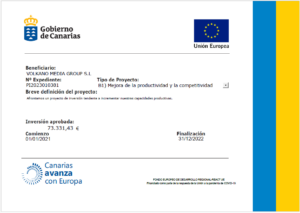Now that we have analyzed the interpretation of book value per share, let’s move on to discuss the limitations of this calculation method. Understanding the Book Value per Share is paramount in navigating the intricate landscape of financial analysis. In this comprehensive guide, we will delve into the intricacies, offering step-by-step insights, expert tips, and real-world applications to empower you in mastering this fundamental concept.
Book Value Per Share vs. Market Stock Price: What is the Difference?
As long as the accountants have done a good job (and the company’s executives aren’t crooked) we can use the common equity measure for our analytical purposes. The book value of a company is based on the amount of money that shareholders would get if liabilities were paid off and assets were liquidated. The market value of a company is based on the current stock market price and how many shares are outstanding.
Limitations of Book Value per Share Calculation
Book value per share (BVPS) is a figure that evaluates the value of a company’s claims based on its net assets. It measures a company’s book value per share by generating a ratio of equity to outstanding shares. Because book value per share only considers the book value, it fails to incorporate other intangible factors that may increase the market value of a company’s shares, even upon liquidation. For instance, banks or high-tech software companies often have very little tangible assets relative to their intellectual property and human capital (labor force). The difference between a company’s total assets and total liabilities is its net asset value, or the value remaining for equity shareholders.
Understanding XRP’s Role in the Future of Money Transfers
The company then hires a famous turnaround manager which excites investors, who bid the shares higher. The market cap of this company increases, although the book value of the company hasn’t changed. As companies acquire new assets, those assets are recorded on the balance sheet at their cost. If a manufacturer buys assembly equipment for $20 million, it records that equipment at a book vaue of $20 million. Companies accumulate ownership of various types of assets over time, all recorded in their financial statements. It can and should be used as a supplement to other valuation approaches such as the PE approach or discounted cash flow approaches.
Despite the increase in share price (and market capitalization), the book value of equity per share (BVPS) remained unchanged in Year 1 and 2. There is a difference between outstanding and issued shares, but some companies might call outstanding common shares «issued» shares in their reports. When looking at the financial statements of a business, look for information about stockholders’ equity, also known as owner’s equity. When preferred shares are not present, the entire equity of the stockholders is utilized.
- If a company’s market cap is three times as high as its book value, it will have a P/B ratio of 3.0x.
- By considering these factors and conducting thorough analysis, investors can make more informed decisions about the value and growth potential of the company’s shares.
- Adam Hayes, Ph.D., CFA, is a financial writer with 15+ years Wall Street experience as a derivatives trader.
- For example, if ABC Limited generates $1 million in earnings during the year and uses $300,000 to purchase more assets for the company, it will increase the common equity, and hence, raise the BVPS.
- To calculate BVPS, you need to find the number of shares outstanding, which is also usually stated parenthetically next to the common stock label (on Yahoo! Finance, it’s located in Key Statistics).
- To get the book value, you must subtract all those liabilities from the company’s total assets.
Gain clarity on how distributing profits to shareholders influences this key financial metric. Influence of Market Conditions on Book Value per Share Explore the dynamic relationship between market conditions and Book Value per Share. Earnings Retention Impact Uncover the impact of earnings retention on Book Value per Share. Explore how reinvesting profits contributes to the company’s net worth and, subsequently, its share value. Liabilities and Book Value Navigate through the financial maze by understanding the role of liabilities in the Book Value per Share calculation. Book value per share is used as an indication of the underlying value of a company compared with the current trading price of the company’s stock.
Like other multiple-based approaches, the trend in price/BVPS can be assessed over time or compared to multiples of similar companies to assess relative value. If a company has a book value per share that’s higher than its market value per share, it’s an undervalued stock. Undervalued stock that is trading well below its book value can be an attractive option for some investors. Preferred stock is usually excluded from the calculation because preferred stockholders have a higher claim on assets in case of liquidation.
Let’s say that Company A has $12 million in stockholders’ equity, $2 million of preferred stock, and an average of 2,500,000 shares outstanding. You can use the book value per share formula to help calculate the book value per share of the company. Value investors prefer using the BVPS as a gauge of a stock’s potential value when future growth and earnings a payroll compliance checklist for us companies projections are less stable. However, as the assets would be sold at market prices, and book value uses the historical costs of assets, market value is considered a better floor price than book value for a company. Although infrequent, many value investors will see a book value of equity per share below the market share price as a “buy” signal.
To better understand book value per share, it helps to break down each aspect of the ratio. The owner of this website may be compensated in exchange for featured placement of certain sponsored products and services, or your clicking on links posted on this website. This compensation may impact how and where products appear on this site (including, for example, the order in which they appear), with exception for mortgage and home lending related products. SuperMoney strives to provide a wide array of offers for our users, but our offers do not represent all financial services companies or products.
Using the average number of shares in the formula is essential since the number at the end of the period may factor in a recent buyback or stock issuance, distorting the figure. The book value per share is significant for investors as it helps them determine the intrinsic value of a given company’s shares. Adam Hayes, Ph.D., CFA, is a https://www.bookkeeping-reviews.com/ financial writer with 15+ years Wall Street experience as a derivatives trader. Besides his extensive derivative trading expertise, Adam is an expert in economics and behavioral finance. Adam received his master’s in economics from The New School for Social Research and his Ph.D. from the University of Wisconsin-Madison in sociology.
Shareholders’ equity is the owners’ residual claim in the company after debts have been paid. It is equal to a firm’s total assets minus its total liabilities, which is the net asset value or book value of the company as a whole. The market value depends on the current market price and how many outstanding shares exist. So, it reflects current prices and changes often as it considers sentiment around future growth in the market.
On the other hand, if XYZ uses $300,000 of the earnings to reduce liabilities, common equity also increases. On the balance sheet, you see «Total Stockholders’ Equity» with a value of $138.2 billion. This figure is calculated by adding the values of preferred stock, common stock, Treasuries, paid-in capital, additional comprehensive income, and retained earnings. The book value of equity per share (BVPS) measures a stock’s valuation that allows investors to assess the financial health of a company. The BVPS can gauge whether a stock is undervalued or overvalued by using a snapshot of its current common equity and shares outstanding.
When compared to the current market value per share, the book value per share can provide information on how a company’s stock is valued. If the value of BVPS exceeds the market value per share, the company’s stock is deemed undervalued. The market value per share is a company’s current stock price, and it reflects a value that market participants are willing to pay for its common share. The book value per share is calculated using historical costs, but the market value per share is a forward-looking metric that takes into account a company’s earning power in the future.
Nevertheless, most companies with expectations to grow and produce profits in the future will have a book value of equity per share lower than their current publicly traded market share price. Calculating a company’s value per share using equity accessible to common shareholders is possible using the book value per share formula. It’s also known as stockholder’s equity, owner’s equity, shareholder’s equity, or just equity, and it refers to a company’s assets minus its liabilities. The denominator is book value per share, and the example is known as the price to book value (P/B). The market price, as opposed to book value, indicates the company’s future growth potential. When computing ROE on a per-share basis, book value per share is also utilized in the calculation.
A second method to boost BVPS is by repurchasing common stock from existing owners, and many businesses utilize their profits to do so. It is crucial to consider these limitations in conjunction with other financial metrics and qualitative factors when assessing a company’s value and investment potential. Book value per share should be used as a tool in a broader analysis, in combination with factors such as earnings, cash flow, industry dynamics, and the competitive landscape.
Unearth the truth about Book Value per Share and its correlation with a company’s profitability. The Formula Decoded Unravel the mathematical wizardry behind calculating Book Value per Share. Dive deep into the formula and gain clarity on its components, laying the foundation for a solid understanding.
By examining the components of a balance sheet, investors can gain insight into a company’s financial health, liquidity, and solvency. The balance sheet provides crucial information for calculating book value per share, as it includes the necessary figures to determine the net worth of the company. Understanding a financial metric known as Book Value Per Share (BVPS) can give you valuable insights into a company’s financial health. For example, consider a company with a $100 million book value, mostly in stable real-estate, trading at a P/B of 0.95. Value investors see a $5 million undervaluation relative to book value that they believe will be corrected for over time.
Say, for example, that in the XYZ case the company buys back 200,000 shares of stock and there are still 800,000 outstanding. In addition to stock repurchases, a business may raise BVPS by increasing the asset balance and decreasing liabilities. By considering these factors and conducting thorough analysis, investors can make more informed decisions about the value and growth potential of the company’s shares.
It depends on a number of factors, such as the company’s financial statements, competitive landscape, and management team. Even if a company has a high book value per share, there’s no guarantee that it will be a successful investment. This is why it’s so important to do a lot of research before making any investment decisions. For instance, consider a company’s brand value, which is built through a series of marketing campaigns. U.S. generally accepted accounting principles (GAAP) require marketing costs to be expensed immediately, reducing the book value per share. However, if advertising efforts enhance the image of a company’s products, the company can charge premium prices and create brand value.
Or, it could use its earnings to reduce liabilities, which would also result in an increase in its common equity and BVPS. Another way to increase BVPS is to repurchase common stock from shareholders and many companies use earnings to buy back shares. Assume, for example, that XYZ Manufacturing’s common equity balance is $10 million, and that 1 million shares of common stock are outstanding. For value investors, book value is the sum of the amounts of all the line items in the shareholders’ equity section on a company’s balance sheet. You can also calculate book value by subtracting a business’s total liabilities from its total assets. Since public companies are owned by shareholders, this is also known as the total shareholders’ equity.
An exception to this valuation is in bank stocks which tend to trade below their BVPS due to their increased risk from trading activities. It’s important to note that book value per share is just one piece of the puzzle when evaluating a company’s investment potential. Equity investors often compare BVPS to the market price of the stock in the form of the market price/BVPS ratio to attribute a measure of relative value to the shares. Keep in mind that book value and BVPS do not consider the future prospects of the firm – they are only snapshots of the common equity claim at any given point in time. A company can use a portion of its earnings to buy assets that would increase common equity along with BVPS.
Defining Book Value per Share Embark on your financial journey by grasping the essence of Book Value per Share. Learn how it provides a snapshot of a company’s net worth attributable to each outstanding share. Discover the finance term Book Value Per Share (BVPS) and learn its definition, formula, calculation process, and get an example to understand its practical application. An asset’s book value is calculated by subtracting depreciation from the purchase value of an asset.
One must consider that the balance sheet may not reflect with certain accuracy, what would actually occur if a company did sell all of their assets. A P/B ratio of 1.0 indicates that the market price of a company’s shares is exactly equal to its book value. For value investors, this may signal a good buy since the market price of a company generally carries some premium over book value.
Armed with this knowledge, you’re better equipped to navigate the financial landscape and make informed investment decisions. Keep exploring, stay informed, and let the numbers guide you to financial success. Book Value per Share vs. Market Value per Share Distinguish between Book Value per Share and Market Value per Share.
However, its value lies in the fact that investors use it to gauge whether a stock price is undervalued by comparing it to the firm’s market value per share. If a company’s BVPS is higher than its market value per share, which is its current stock price, then the stock is considered undervalued. Using the XYZ example, assume that the firm repurchases 200,000 shares of stock and that 800,000 shares remain outstanding. Besides stock repurchases, a company can also increase BVPS by taking steps to increase the asset balance and reduce liabilities. Stock repurchases occur at current stock prices, which can result in a significant reduction in a company’s book value per common share. Book value per common share (or, simply book value per share – BVPS) is a method to calculate the per-share book value of a company based on common shareholders’ equity in the company.




